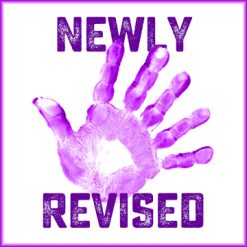 This is an occasional series on vocal oddities,
by voice actor and Staff Editor Elizabeth Holmes. Enjoy these glimpses into the
science of sound - and learn more about how it benefits you. For earlier
reports, search SOUNDS ODD (box above menu bar on this page). This is an occasional series on vocal oddities,
by voice actor and Staff Editor Elizabeth Holmes. Enjoy these glimpses into the
science of sound - and learn more about how it benefits you. For earlier
reports, search SOUNDS ODD (box above menu bar on this page).(VOXtra) - Ever heard of synesthesia? It’s a neurological condition that causes people who have it to connect the stimulus of one sense with the perception of another sense. People who have synesthesia are called synesthetes (pronounced SIN’-ess-theets). Approximately 1% of the population has this condition, and it’s more common among women than men. Synesthetes make odd connections - like "tasting” words or "seeing” bursts of color when they hear music. Scientists call this "cross-modal brain plasticity.” The rest of us understand it as a kind of "short circuit” in the brain - one that cross-wires two senses. And it’s not a disability - it’s an extra ability! Scientists postulate that we’re all born with synesthesia, but only some of us retain it after infancy. IMPLICATIONS FOR AUDIO ENGINEERING Voice actors and audio engineers may be interested to learn more about synesthesia, because it may have implications for our work. Without realizing it, we may be providing sound for moving images that is "louder” we than we intend. For instance, recently, researchers studying synesthesia discovered a previously unrecognized form of synesthesia - "hearing” motion. Synesthetes who "hear” motion are definitely having a different experience than the rest of us when they watch moving images. At the movies, for example, they’re probably experiencing the soundtrack as louder, because in addition to hearing whatever’s being broadcast, they’re also "hearing” cross-wired sensations in their heads. DISCOVERED BY ACCIDENT Scientific study of this ability* began with an accidental discovery at Caltech Brain Imaging Center when a group of students passing by the lab of neurologist Melissa Saenz happened to notice a video running on her screen without sound. One of them asked, "Does anyone else hear something when they look at that?” He received stares and bewildered looks from his companions, but Saenz (an expert on synesthesia) recognized his ability immediately. That led to her ground-breaking study of motion-sound synesthesia. ARE YOU A SYNESTHETE? Wonder if you might have the ability to "hear” motion? Take this simple test: If you "hear” sounds while watching this graphic, you may have this unusual form of synesthesia. And if you do, just know that you’re in good company! A list of famous synesthetes* follows. FAMOUS SYNESTHETES ... Jimi Hendrix (Composer/Musician – 1942 - 1970) Music = Color Hendrix described chords and harmonies as colors. The verse to his famous song Purple Haze was based on the chord E7#9, his "purple chord," (dominant seven sharp nine). Wolfgang Amadeus Mozart (Composer/Musician – 1756 - 1791) Music = Color For Mozart, the key of D Major had "a warm orangey sound to it.” B Flat Minor was "blackish.” This may explain why so much of Mozart’s music was composed in major keys, and also why he wrote musical scores with notes in different colors. Tori Amos (Composer/Musician – Born 1963) Music = Color "The song appears as light filament once I've cracked it. As long as I've been doing this, which is more than thirty-five years, I've never seen a duplicate song structure. I've never seen the same light creature in my life. Obviously similar chord progressions follow similar light patterns, but try to imagine the best kaleidoscope ever." Duke Ellington (Composer/Musician – 1899 - 1974) Sound = Color & Texture "I hear a note by one of the fellows in the band and it’s one color. I hear the same note played by someone else and it’s a different color. When I hear sustained musical tones, I see just about the same colors that you do, but I see them in textures. If Harry Carney is playing, D is dark blue burlap. If Johnny Hodges is playing, G becomes light blue satin." Edvard Munch (Painter – 1863 -1944) Color = Sound Most famous for his painting "The Scream,” Munch describes his inspiration for the piece as follows: "I was walking along a path with two friends - the sun was setting - suddenly the sky turned blood red - I paused, feeling exhausted, and leaned on the fence - there was blood and tongues of fire above the blue-black fjord and the city - my friends walked on, and I stood there trembling with anxiety - and I sensed an infinite scream passing through nature.” *Articles referenced in this piece include:
 ABOUT ELIZABETH ABOUT ELIZABETHElizabeth Holmes is a writer, voice actor, and staff editor at VoiceOverXtra, based in Northern California. She is also editor of VoiceOverXtra's book division, including Voice Over Legal, by voice actor / attorney Robert Sciglimpaglia. Email: Elizabeth@HolmesVoice.com |
|
As of the NEW website launch, 03/22/2012






.png)




Jay -- You bring up an interesting point about aptitude for audio engineering and aptitude for music. In my experience, they're different skill sets, and it would clearly be a bonus to have both!